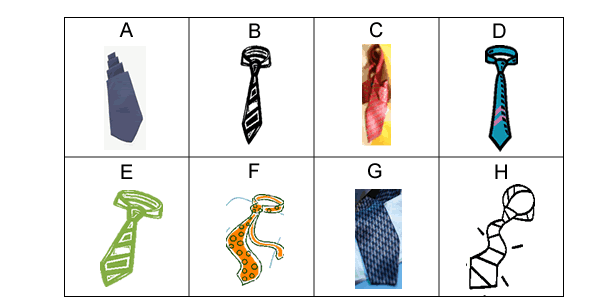Copyright © University of Cambridge. All rights reserved.
'It's a Tie' printed from https://nrich.maths.org/
Show menu
Why do this problem?
This problem allows children to simulate a probability experiment; to be involved, be creative, and construct their own meanings and explanations for the results they come up with. The problem fits a wide variety of skill and age groups because the design of the experiment, and the analysis and interpretation
of the data can be stretched to the children's level of understanding. The familiar setting of the problem also makes it meaningful for children. Children have intuitive ideas about probability, which can be capitalised on. Their understanding of generating random events is developed by problems like this.
Possible approach
Having presented the task orally to the group, children can decide how best to approach it. They could either cut out and randomly draw ties from a bag with replacement (you could print off this sheet ), represent the ties with letters, or use a computer simulation, depending on
their level.
Organising the class into groups, or pairing children, provides the opportunity to communicate mathematically about the design of the experiment, discuss and revise estimates as more data become available and describe the results in terms of experimental probability.
When discussing their results, this is a good opportunity to talk about whether the data they collected was what they expected. Why or why not? This could lead into introducing theoretical probability. The results from the various groups could be compared and then combined to provide a more accurate estimate of the theoretical probability.
Key questions
How many weeks were there when Kaia's father wore the same tie more than once?
Is that what you expected?
What is the likelihood that he wears the same tie three times in a week?
What is the chance that he will wear a different tie every day in the week?
Possible extension
The problem can be extended by changing the number of ties and/or the number of days in the rotation. Once this problem had been modelled and different experimental designs and solutions shared with the class, children should be encouraged to pose their own questions and design simulations that will solve their own problems.
An extra challenge can be to devise an experiment that will show how many days in a row it is likely he will wear a different tie. This requires a different approach: Total number of days divided by the total number of trial.
If the pupils have enough prior experience with probability experiments, they may be able to compute the theoretical probability to compare with the experimental results.
Possible support
Physically performing an experiment by pulling ties out of a "hat" should help all children participate in this task.
